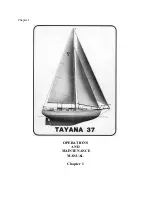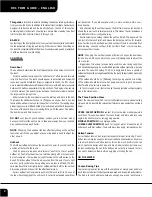
U.S. waters including coastal waters up to three miles offshore. The law further provides for "no
discharge" by boats operated in enclosed lakes and reservoirs or in rivers not capable of interstate
navigation. States may apply to the EPA to have certain other waters declared "no discharge zones" if
discharge of treated sewage would be harmful. In short, boats with installed toilets must have an
operable Coast Guard approved Marine Sanitation Device (MSD) designed to either hold sewage for
pump out ashore or for discharge in the ocean beyond the three mile limit, or to treat the sewage to
Federal standards prior to discharge.
All boats built since 1977 with installed toilets must have an operable approved type I, II or III MSD.
Since 1980, all boats (including those built before 1977) with installed toilets must have an operable MSD.
Both the U.S. Coast Guard and the Natural Resources Police can enforce MSD requirements.
Check with your local authorities, Coast Guard, local marina or your dealer for the rules and/or laws that
may apply specifically in your area.
Vacuum Flush with Overboard and Dockside Discharge
Your Pro-Line is equipped with a VacuFlush head system that offers the ability to use either overboard or
dockside discharge. To operate or test the system, make sure that your fresh water tank is full of water.
Make sure that the DC main, cabin freshwater system, and head switches on the AC/DC panel are all in
the on position. To flush the VacuFlush head system, use your foot to depress the pedal at the base of
the head. This action will pump fresh water into the stool, empty the head and transfer all waste into the
waste tank. When you release the pedal, water will stop entering the stool and the flushing action will
cease.
You can check the waste level in the waste tank by monitoring the lights on the Tank Watch 4 panel,
which is located next to the AC/DC panel. As waste enters the tank, the lights will change to indicate the
waste level (i.e., green for empty, yellow for low, orange for mid level, red for full).
Your boat is equipped to offer you the option of using overboard or dockside discharge to pump out the
waste tank. Before using the overboard discharge system, be sure to check with your local authorities,
Coast Guard, local marina or your dealer for the rules and/or laws that may apply specifically in your area.
Overboard Discharge - To operate the system,
first make sure that the DC main, cabin
freshwater system, DC macerator and head
switches on the AC/DC panel are all in the on
position. Then, turn the key on the Tank
Master 4 panel to the automatic position. The
green light will come on indicating that the
system is working and waste will begin
pumping overboard via one of the thru hulls
located amidships on the side of the hull.
Once the tank level reaches the low level in the tank, the green light will go out and the system will turn
off. You will need to turn the key to the manual position to complete the pump out process.
If the system does not seem to be pumping properly (water should shoot out approx. 10 feet via the thru
hull), check for leaks, loose clamps, etc. For access to check for leaks:
•
Remove the tackle box and frame by removing only the top 2 and bottom 2 screws of the
tackle box. The other 4 screws hold the frame to the tackle box. Check the hose
connections to be sure that there is no leak.
•
Lift the hinged hatch on the bottom of the mid berth and check the fittings and/or clamps
on the pump.
34
















































